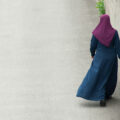The Danish media and their Islamophobia problem
The Danish media and their Islamophobia problem
In 2005, Danish cartoons depicting Muhammad made headlines. Yet, in 2022, studies show that Muslims still receive unfair and Islamophobic media coverage.
Denmark is a country often associated with ‘hygge’, social democratic politics, and ‘Scandi noir’ tv-series. But a darker side to Danish society can be seen in the numerous reports on Islamophobic content in the Danish media landscape. In 2008, the World Economic Forum reported that the Danish media were one of the most critical of Muslims and Islam, when compared to the media in most other Western countries.[1] This goes along with numerous other warnings that Denmark has had from the European Commission against Racism and Intolerance (ECRI), which has pinpointed the Danish media’s hostile tone towards ethnic minorities, in particular Muslims.[2] [3] [4] But when did the Danish media’s not so ‘hygge’ attitude towards Muslims start ringing alarm bells in the international community? And does the critique still ring true in today’s media landscape?
The Muhammad drawings – the beginning
In 2005, the Danish right-wing newspaper Jyllands-Posten published ‘the Muhammad drawings’, a number of caricature drawings of the prophet Muhammad. This outraged a significant part of the world, especially Muslim countries, as drawing Muhammad is forbidden in most strands of Islam.[5] [6] However, according to many voices in the debate, beyond the debate of ‘to draw or not to draw’, the main issue with the caricatures in Jyllands-Posten was their Islamophobic sentiments. These drew connections between Islam and terrorism through, for example, depicting Muhammad with a bomb in his turban.[7] The publication of these cartoons created a sharp debate about the limits of freedom of speech, which led the cartoons, and in turn the response of Danish Muslims, to come to represent much wider political questions.[8]
Negative representations of Muslims and Islam in the Danish media
In a large research project on the Danish media, conducted by the Danish National Centre for Social Research, it was explored if this negative framing was connected to newspapers affiliated with specific ideological stances. It was also explored if negative portrayals of Muslims were perhaps a larger problem in the Danish press. The research monitored the four main newspapers in the Danish media, which were all politically diverse: Politiken, a “radical-social, liberal broadsheet paper,” Jyllands-Posten, a “liberal broadsheet paper,” the tabloid EkstraBladet, and the Christian niche paper Kristeligt Dagblad. The research paper concluded that the Danish media generally covered Muslims and Islam negatively, and that there were hardly any articles discussing the discrimination or racism that Muslims in Denmark face. In fact, only on three occasions were articles about racism and discrimination published on the front page of a newspaper. In each of these, it was the Kristeligt Dagblad, a Christian newspaper, that covered the discrimination faced by Muslims.[9]
Several articles about racism and discrimination in the Danish media focused on the discrimination that was directed towards other minorities by Muslims, such as at Christians, Jews, non-practising Muslims, women, and the LGBTQ+ community. Many of these articles focused on the oppression exercised by Muslim individuals or countries. Islam was also often presented as being a threat to ‘Danish values’ or Christianity, emphasising the general Islamophobia problem in Danish society.[10]
A general issue in the Danish media landscape
Conclusively, the study found that the four most prominent newspapers in Denmark, regardless of political leaning, all contributed to legitimising and shaping a prejudiced discourse against Muslims and Islam. This suggests that there is an overall problem with the Danish media when it comes to covering topics on Islam and the Muslim community, and that this is not restricted to specific right-wing or anti-immigrant publications. Though the Islamophobic trend may have started with Jyllands-Posten’s Muhammed drawings, it seems that anti-Muslim discourses have spread like wildfire in the Danish press.
Hannah Macaulay and Freddie Scott
Want to learn more about similar topics? Go to the EARS Dashboard.
Sources
[1] World Economic Forum (2008) Islam and the West: Annual Report on the State of Dialogue. Geneva: World Economic Forum.
[2] ECRI (1999) Første rapport om Danmark. Vienna: ECRI
[3] ECRI (2001) Anden rapport om Denmark. Vienna: ECRI
[4] ECRI (2006) Tredje rapport om Danmark. Vienna: ECRI
[5] Hvorfor må man ikke tegne Muhammed? | Kristeligt Dagblad.
[6] Imam afliver myte om tegningforbud i Koranen | Indland | DR
[7] Aviser genoptrykker omstridt Muhammedtegning | Indland | DR
[8] Free speech at issue 10 years after Muhammad cartoons controversy | Europe | News and current affairs from around the continent | DW | 30.09.2015
[9] Jacobsen, S.J., Jensen, T.G., Vitus, K. and Weibel, K., 2013. Analysis of Danish media setting and framing of Muslims, Islam and racism. SFI.
[10] Jacobsen, S.J., Jensen, T.G., Vitus, K. and Weibel, K., 2013. Analysis of Danish media setting and framing of Muslims, Islam and racism. SFI.






